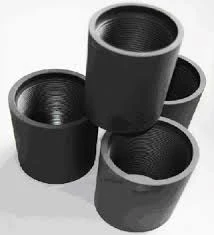- Afrikaans
- Albanian
- Amharic
- Arabic
- Armenian
- Azerbaijani
- Basque
- Belarusian
- Bengali
- Bosnian
- Bulgarian
- Catalan
- Cebuano
- Corsican
- Croatian
- Czech
- Danish
- Dutch
- English
- Esperanto
- Estonian
- Finnish
- French
- Frisian
- Galician
- Georgian
- German
- Greek
- Gujarati
- Haitian Creole
- hausa
- hawaiian
- Hebrew
- Hindi
- Miao
- Hungarian
- Icelandic
- igbo
- Indonesian
- irish
- Italian
- Japanese
- Javanese
- Kannada
- kazakh
- Khmer
- Rwandese
- Korean
- Kurdish
- Kyrgyz
- Lao
- Latin
- Latvian
- Lithuanian
- Luxembourgish
- Macedonian
- Malgashi
- Malay
- Malayalam
- Maltese
- Maori
- Marathi
- Mongolian
- Myanmar
- Nepali
- Norwegian
- Norwegian
- Occitan
- Pashto
- Persian
- Polish
- Portuguese
- Punjabi
- Romanian
- Russian
- Samoan
- Scottish Gaelic
- Serbian
- Sesotho
- Shona
- Sindhi
- Sinhala
- Slovak
- Slovenian
- Somali
- Spanish
- Sundanese
- Swahili
- Swedish
- Tagalog
- Tajik
- Tamil
- Tatar
- Telugu
- Thai
- Turkish
- Turkmen
- Ukrainian
- Urdu
- Uighur
- Uzbek
- Vietnamese
- Welsh
- Bantu
- Yiddish
- Yoruba
- Zulu
High-Quality Coupling Tube Fittings for Secure Connections
Understanding Coupling Tube Fittings A Comprehensive Guide
Coupling tube fittings are essential components in various industries, particularly in fluid and gas management systems. These fittings connect two tubes or pipes, enabling fluid or gas to flow through them seamlessly. Available in a variety of materials and designs, coupling tube fittings ensure leak-free connections and are critical for maintaining the integrity of fluid systems.
Types of Coupling Tube Fittings
Coupling tube fittings come in numerous configurations, including compression fittings, solder fittings, and threaded connections.
1. Compression Fittings These fittings create a tight seal by using a nut and a ferrule to compress the tubing. This design is particularly favored for its simplicity and ease of installation, making it a popular choice in applications where frequent disassembly is required.
2. Solder Fittings Used predominantly in copper piping systems, solder fittings require heating to attach the fitting to the tube. This method provides a strong, permanent joint that is resistant to high pressures and temperatures.
3. Threaded Connections These fittings utilize male and female threads to join two coupling tubes. They are easy to assemble but may require the use of sealing compounds or Teflon tape to prevent leaks.
Materials Used in Coupling Tube Fittings
The choice of material for coupling tube fittings is critical, as it impacts durability, corrosion resistance, and overall performance
. Common materials includecoupling tube fitting

- Brass Known for its excellent corrosion resistance and strength, brass is often used in water and gas lines.
- Stainless Steel This material offers superior strength and resistance to rust, making it ideal for harsh environments and high-pressure applications.
- Plastic Lightweight and resistant to corrosion, plastic fittings are commonly utilized in chemical processing and aquarium applications.
Applications of Coupling Tube Fittings
Coupling tube fittings are utilized in various sectors, including automotive, HVAC, medical, and manufacturing industries. In automotive applications, they connect fuel lines and hydraulic systems. In HVAC, they are integral to refrigerant lines. The medical industry uses these fittings in syringes and IV lines, emphasizing the importance of reliability and safety.
Installation and Maintenance
Proper installation is crucial to ensuring the efficiency and longevity of coupling tube fittings. Users should follow manufacturer guidelines for installation, ensuring that the fittings are tightened correctly to prevent leaks. Regular maintenance and inspection of these fittings are equally important, as wear and tear can lead to failures.
Conclusion
In summary, coupling tube fittings play a vital role in the functionality of fluid and gas systems across multiple industries. Understanding their types, materials, and applications helps in selecting the right fittings for specific needs, ensuring efficiency and safety in various operations. Whether for industrial use or home plumbing, investing in high-quality coupling tube fittings is essential for optimal performance and longevity.
-
Tubing Pup Joints: Essential Components for Oil and Gas OperationsNewsJul.10,2025
-
Pup Joints: Essential Components for Reliable Drilling OperationsNewsJul.10,2025
-
Pipe Couplings: Connecting Your World EfficientlyNewsJul.10,2025
-
Mastering Oilfield Operations with Quality Tubing and CasingNewsJul.10,2025
-
High-Quality Casing Couplings for Every NeedNewsJul.10,2025
-
Boost Your Drilling Efficiency with Premium Crossover Tools & Seating NipplesNewsJul.10,2025







